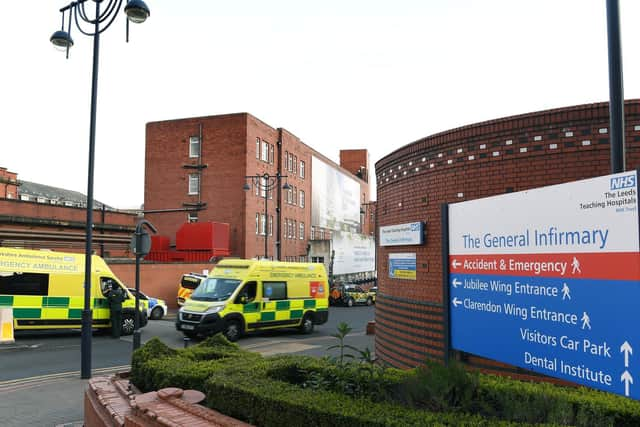Northern NHS trusts concerned about ‘prematurely’ leaving Tier 3 on day Leeds finds out if city will go into Tier 2
Health Secretary Matt Hancock is due to announce the outcome of the latest review of the country’s tier system today (Thursday).
It follows emergency action to place London and parts of Essex and Hertfordshire into Tier 3, the highest level of restrictions, earlier this week amid rising Covid-19 infections.
Advertisement
Hide AdAdvertisement
Hide AdThere have been hints that Leeds may go into Tier 2 after Matt Hancock responded to a question from Leeds Central MP Hilary Benn earlier this week.


The current number of cases per 100,000 people in Leeds is now less than 140 - down from around 400.
Chris Hopson, chief executive of NHS Providers – which represents hospital trusts in England, said the Government was right to move London into Tier 3 as “there is a ring of areas around London – for example, in the home counties – where trusts are alarmed at the rise in infection rates and hospital admissions”.
“It must now urgently consider adding other areas to that tier where infection rates are similarly worrying,” he added in a statement on Wednesday.
Advertisement
Hide AdAdvertisement
Hide AdMr Hopson also said there was “real concern in many trusts in the northern half of the country about leaving Tier 3 prematurely”.
He added: “It is good news that infection rates are dropping, in some cases significantly.
“But we can’t afford to let up. As soon as infection rates rise, excess death rates rise too. Controlling infection rates is about limiting patient harm.
“At the same time, most hospitals in the north of the country still have very high levels of Covid-19 patients, just as we go into winter, the NHS’ busiest period.
Advertisement
Hide AdAdvertisement
Hide Ad“Given this level of Covid-19 demand and the number of beds lost to ensure appropriate infection control, even a small increase in the number of Covid-19 patients will also put those hospitals under significant pressure.”
Speaking ahead of updated guidance being issued for Christmas, Mr Hopson said decisions over tiers should be “as robust as possible”, highlighting they were “completely linked” to the relaxation of rules over the festive period.
“That means no delay in adding any area to Tier 3 that needs to be in that tier, and no premature removal of any area from it, either,” he said.
His comments came as Greater Manchester mayor Andy Burnham said there was a “clear case” for the region being eased into Tier 2.
Advertisement
Hide AdAdvertisement
Hide AdMr Burnham argued Greater Manchester should exit the most stringent restrictions, but said he would understand if the Government took a more cautious approach.
He said there have been “steady decreases” across all of the region’s 10 boroughs and its average rate is around 150 cases per 100,000. This is below the England-wide average of 194.
Meanwhile, the leader of Preston City Council, Cllr Matthew Brown, said he believed Lancashire will stay in Tier 3.
He said: “The effect of Tier 3 restrictions have been felt by everyone in the city and I remain gravely concerned about their effects on our hospitality and culture sectors who rely heavily on the festive period.
Advertisement
Hide AdAdvertisement
Hide Ad“However, while case numbers in Preston and throughout Lancashire remain high, especially in the over 60s, it is unlikely that we will be placed into Tier 2 before Christmas.”
On Wednesday, London joined large swathes of the Midlands, Yorkshire, the North East and the North West in Tier 3.
Before the change, 99% of the population in England was already living under Tiers 2 and 3.
Only the Isle of Wight, Cornwall and the Isles of Scilly are under the lightest Tier 1 controls.
Advertisement
Hide AdAdvertisement
Hide AdDecisions on tiers include an examination of coronavirus cases across all age groups and specifically among the over-60s, who are considered most at risk.
Officials also look at whether infection rates are rising or falling in an area and the positivity rate – meaning the number of positive cases detected as a percentage of tests taken.
Pressure on the NHS is also taken into account, including current and projected occupancy.